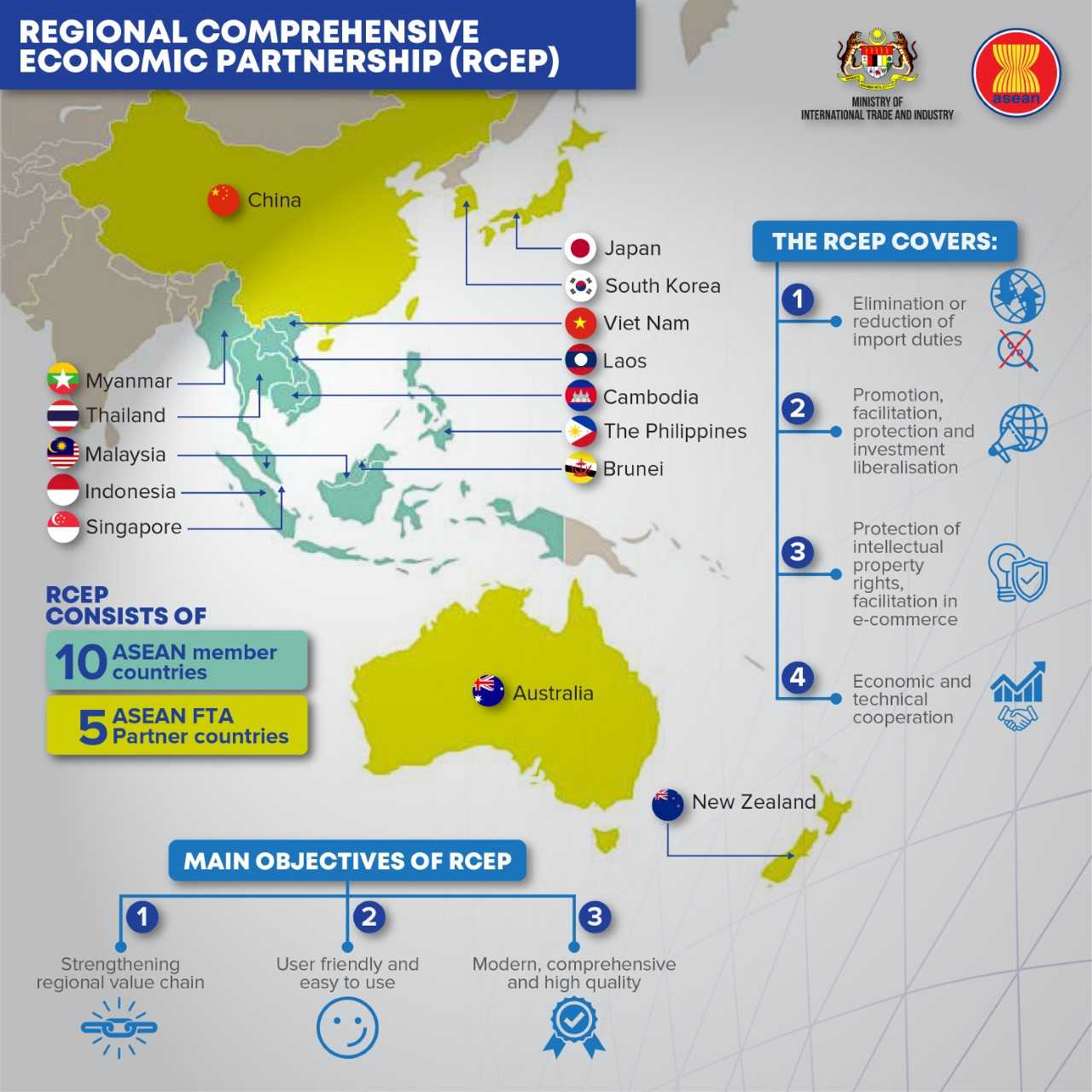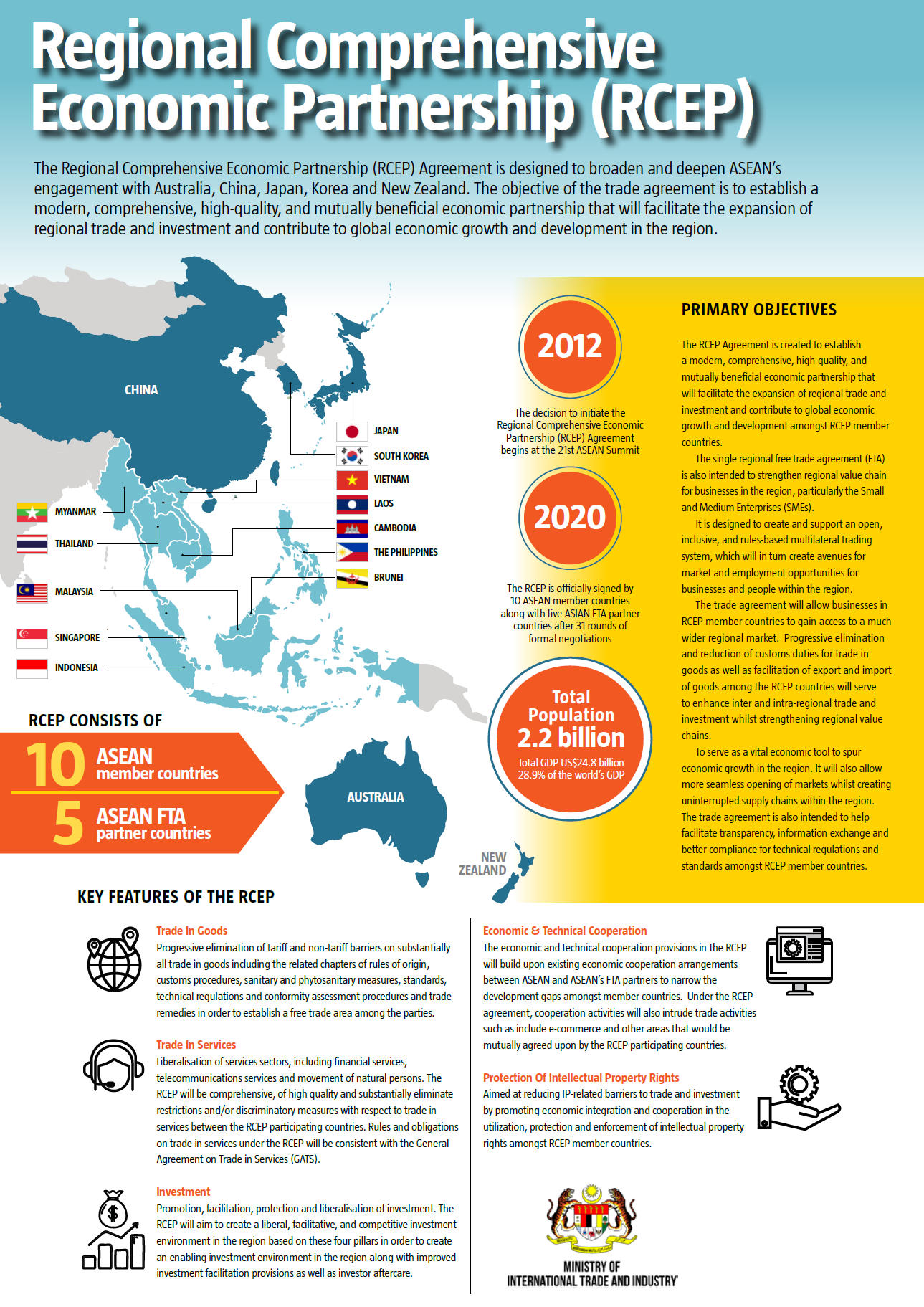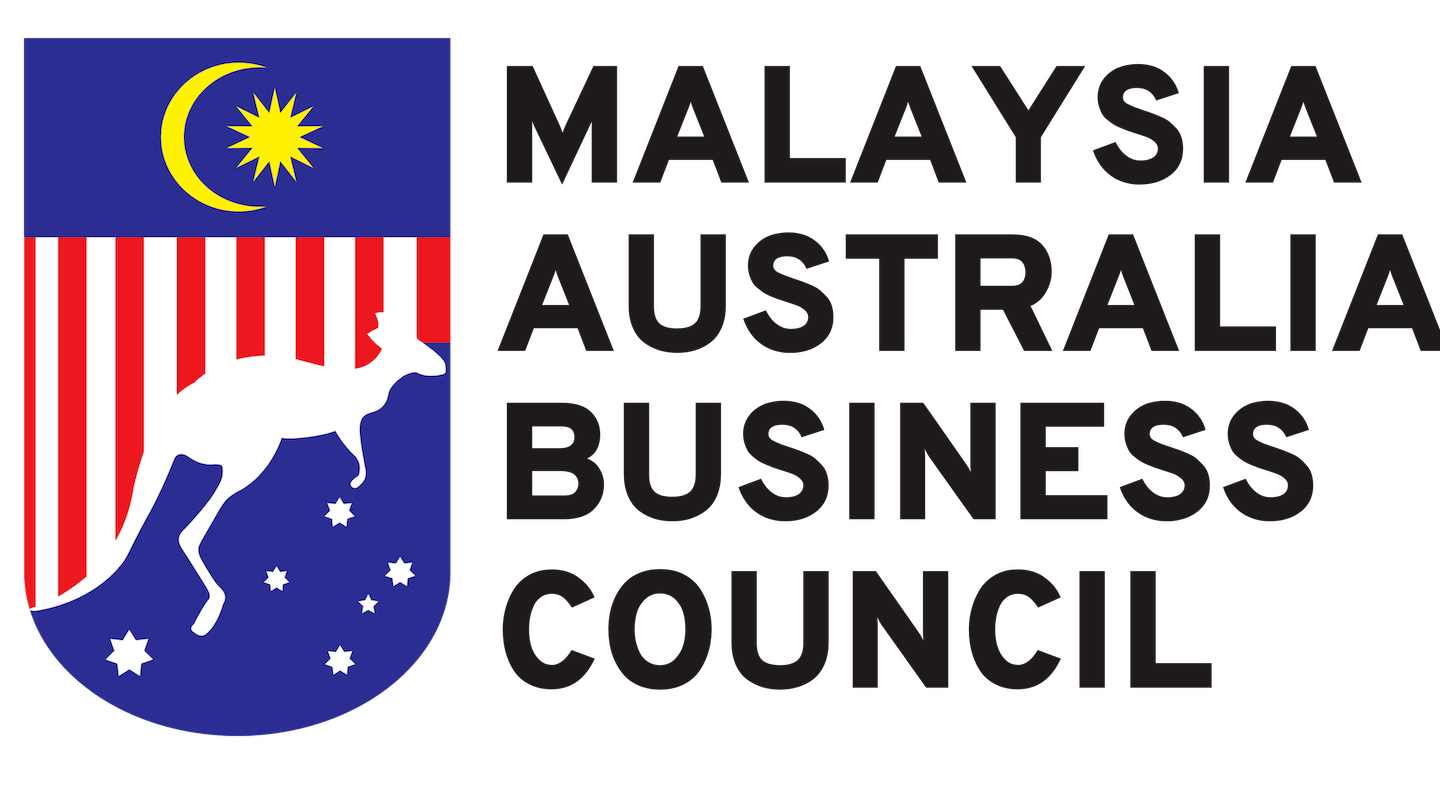

BACKGROUND
Agreement PDF RCEP
Source: MITI
The RCEP negotiations was launched in November 2012 at the 21st ASEAN Summit in Phnom Penh, Cambodia but the negotiations only formally started in 2013.
Initially, RCEP was negotiated by 16 countries, consisting 10 ASEAN Member States (AMS) and ASEAN’s Free Trade Area (FTA) Partners or better known as AFPs. The AFPS are Australia, China, India, Japan, Korea as well as New Zealand.
Later in November 2019, during the ASEAN Summit, Prime Minister of India, Mr Narendra Modi announced that India cannot join RCEP in its current form.
In gist, the objective of RCEP is to streamline and amalgamate the ASEAN FTAs with its Dialogue Partners (ASEAN + 1 FTAs) into a single regional trade agreement that can contribute to strengthening regional value chain actives in the region as well make RCEP more user-friendly and simpler to use especially for the Small and Medium Enterprises (SMEs).
The ASEAN + 1 FTAs are:
ASEAN-China FTA
ASEAN-Australia New Zealand FTA
ASEAN-India FTA
ASEAN-Japan FTA
ASEAN-Korea FTA
When the RCEP Agreement is implemented, it will cover:
Tariff elimination and reduction for merchandise goods, including the facilitation of export and import of goods among the RCEP countries.
Opening markets to welcome the services providers within the RCEP region for sectors, including financial services, telecommunications services and movement of natural persons;
Promotion, facilitation and protection on investment within the region;
To ensure a level playing field to ASEAN countries while recognising the importance of special and differential treatment among RCEP countries especially the developing countries; and
information exchange and promotion of transparency measures to facilitate business and investment within the region including providing economic and technical cooperation especially to SMEs .
SCOPE
The scope of the RCEP negotiating areas is comprehensive and include the following:
Tariff elimination for trade in goods, including the related chapters of rules or origin, customs procedures, sanitary and phytosanitary measures, standards, technical regulations and conformity assessment procedures and trade remedies;
Liberalisation of services sectors, including financial services, telecommunications services and movement of natural persons;
Promotion, facilitation, protection and liberalisation of investment;
Competition policy (countries are allowed to implement national laws related to state-owned enterprises), intellectual property rights, electronic commerce and government procurement (no market access, only for information exchange and promotion of transparency measures),
Economic and technical cooperation and SMEs; and
Legal and institutional issues.
BENEFITS TO MALAYSIA
The major beneficiary of this mega FTA will be ASEAN. Based on World Bank data in 2020, the 15 RCEP Participating Countries (RPCs) account for:
A total of 29.46% of the global population or 2.3 billion people.
Combined Gross Domestic Products (GDP) of US$25.9 trillion (RM109.6 trillion) or 30.64% of the world's GDP.
Accounts for US$10.09 trillion (RM42.73 trillion) or 28.33% of global merchandise trade.
The five ASEAN FTA Partners (AFPs) are major investors in ASEAN contributing US$23.7 billion (RM100.37 billion) or 17.26% of the total Foreign Direct Investment (FDI) flow of US$137.3 billion (RM581.45 billion).
RCEP will benefit towards Malaysian companies by:
Offering market access to a third of world’s population where intra-regional sourcing of raw materials at competitive price,
Integrating supply chain within the RCEP region,
Promoting greater transparency, information sharing, trade facilitation, economic cooperation, standardisation of international rules relating to E-commerce,
Mutually recognising international standards, technical regulations trade, and
Providing clarity in protection of intellectual property rights.
CONTACT MITI
For matters relating to the processing of Preferential Certificate of Origin (CO Form RCEP) / Rules of Origin, please contact:
- Ms. Izzati Saadiah Mohamad Saad
DL: 03-62084803
Email: izzzatisaadiah@miti.gov.my
- Ms. Nurazira Amira Saiful Bahri
DL: 03-62084735
Email: n.amira@miti.gov.my
- Mr. Muhammad Faris Sameon
DL: 03-62084750
Email: faris@miti.gov.my
- Mr. Mohammad Haziq Ikhwan Md Yusof
DL: 03-6208 4723
Email: haziq.yusof@miti.gov.my
- Ms. Deborah Nicole Danker
DL: 03-62084724
Email: deborah@miti.gov.my
- Ms. Sumathi Visualingom
DL: 03-62084717
Email: sumathi.lingom@miti.gov.my
Further information related to Cost Analysis (CA) and Preferential Certificate of Origin (PCO) on RCEP, kindly send an email to:
or drop by at The Business Advisory Centre, Level 2, MITI Tower, Jalan Sultan Haji Ahmad Shah (Jln. Duta), Kuala Lumpur. Consultation hours:
- Monday – Thursday: 10:30am – 12:30pm / 2:30pm – 4:30pm
- Friday: 10:30am – 12:00 noon / 3:00pm – 4:30pm
